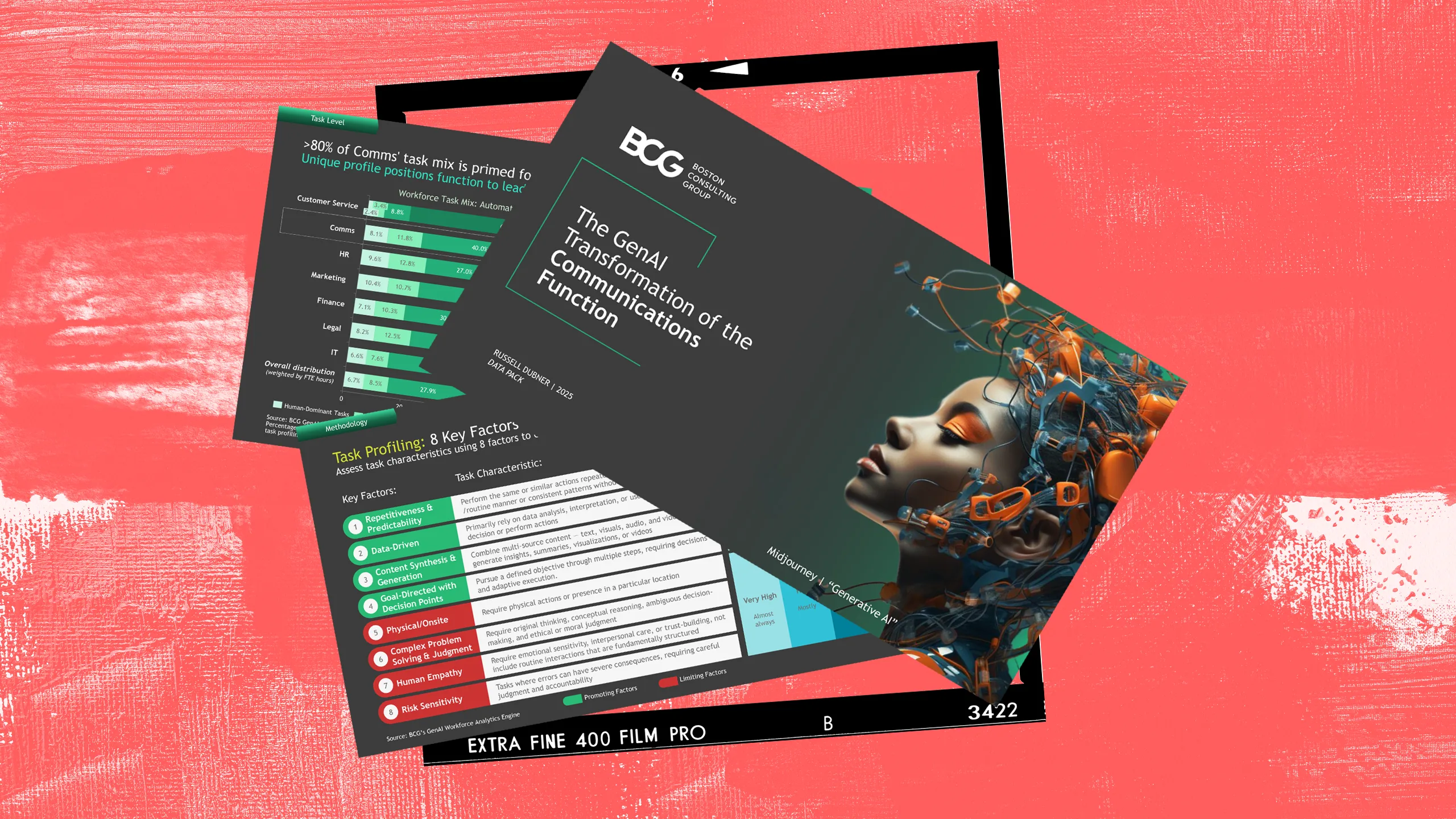More than 80 per cent of a typical comms professional’s role could be augmented by the deployment of AI, according to a new report which suggests the profession is among the most likely to be disrupted by the rapid advance of such technology.
Just 8.1 per cent of comms work is defined as ‘human dominant’ by the report, from multinational consultancy BCG. Much of the remainder can benefit from collaboration with or assistance from AI, though less than 9 per cent is classified as fully automatable. Internal comms is among the areas highlighted as being particularly ripe for the greater introduction of AI.
It suggests the profession, already grappling with the implications of large language model (LLM)-based tools being integrated into everyday workflows, may face further disruption. BCG says agentic AI, where intelligent systems perform end-to-end tasks and communicate with each other without human intervention, will be the main driver of these shifts, though it suggests teams can potentially put the time savings from AI towards greater personalisation or higher quality work rather than seeing roles diminished.
Comms is more ripe for disruption than almost any other white collar role, according to BCG. Professionals could eventually reclaim up to 47 per cent of their time if AI fully reshapes roles, putting it ahead of HR, marketing, finance, IT and legal. Only customer service (66 per cent) will be more profoundly affected.
“The real differentiator is how that freed-up capacity gets reinvested. The most effective leaders are channeling it into sharper strategy, better foresight, and greater impact,” says Russell Dubner, BCG’s chief communications officer.
“You can use GenAI to cut costs but most comms leaders I speak with are aiming higher – to improve work quality, scale their influence and turn their teams into a strategic advantage.”
Alongside time savings, AI could also reduce costs by 28 per cent. BCG says it reached its conclusions by examining tasks within typical roles that are “repetitive, data-driven or content-intensive”. Within comms, these fall mostly within what it classifies as digital and multimedia communications, as well as ops, planning and analytics and internal comms.
By contrast, public affairs and government relations, as well as strategic and executive comms, are less likely to involve AI, now or in the future. Broadly, these tasks require greater human empathy or complex problem-solving, or may be too risky to automate in whole or part.
Dubner urges comms leaders to see AI as an opportunity to fundamentally realign roles rather than focus on narrower wins. “Pilots aren’t the prize. The real value comes from reimagining comms workflows end-to-end and putting GenAI at the center of the agenda, not on the sidelines,” he adds.
The report follows on from a recent study by an executive search firm, which found senior in-house leaders were already seeing 30 per cent increases in productivity and efficiency by using AI to automate routine and time-consuming tasks.

